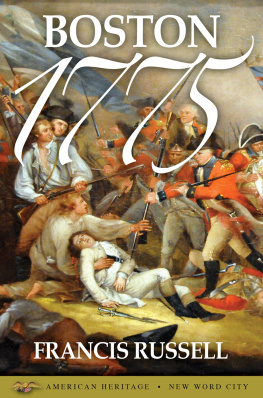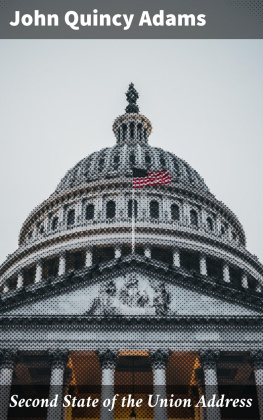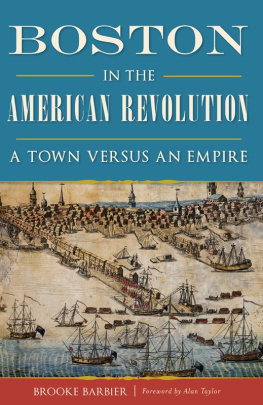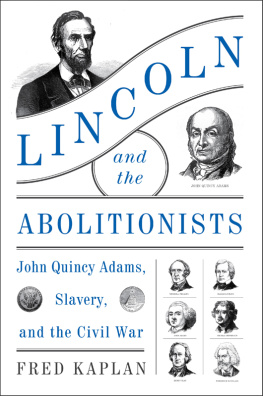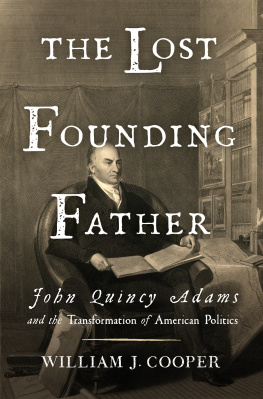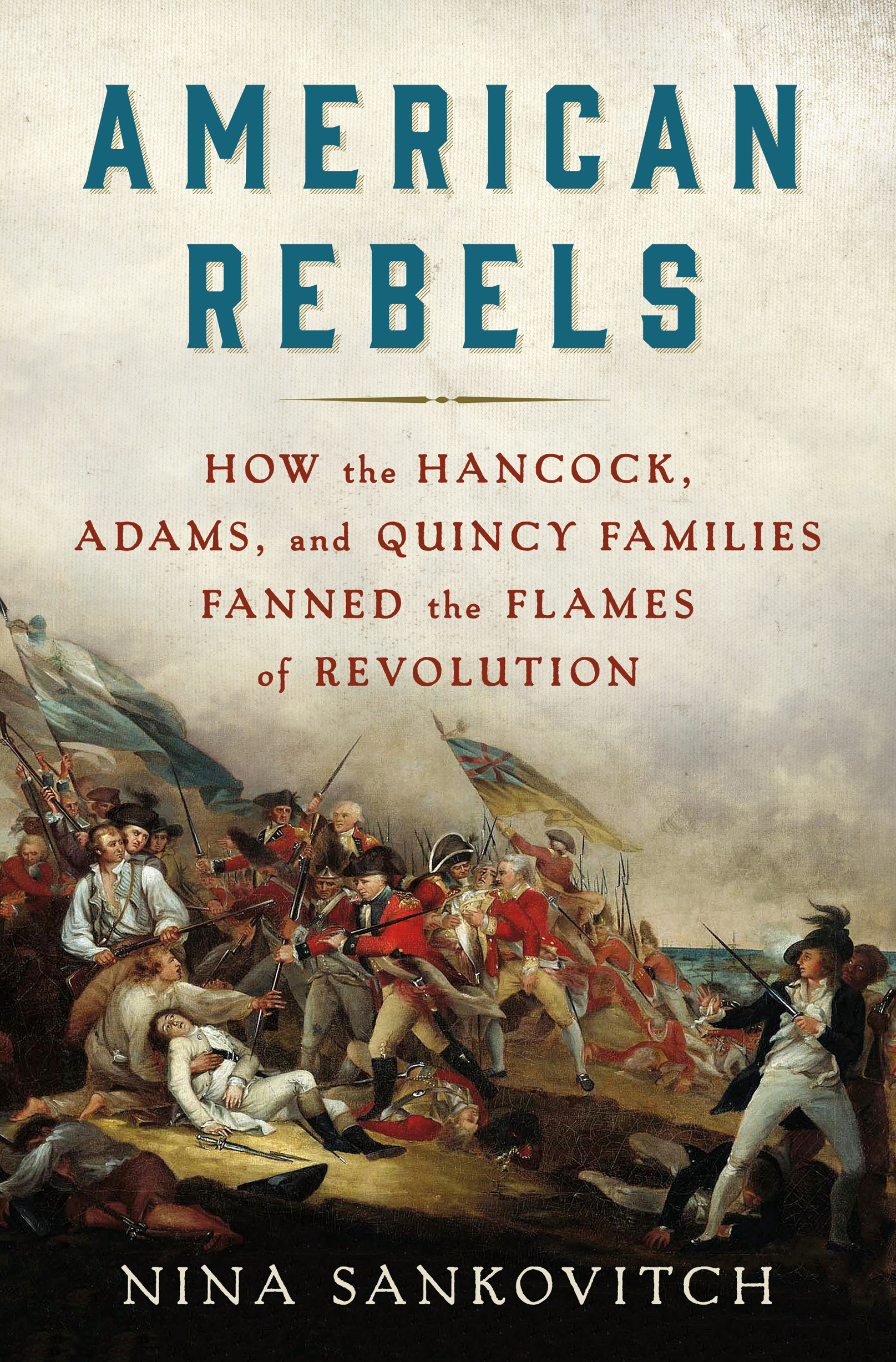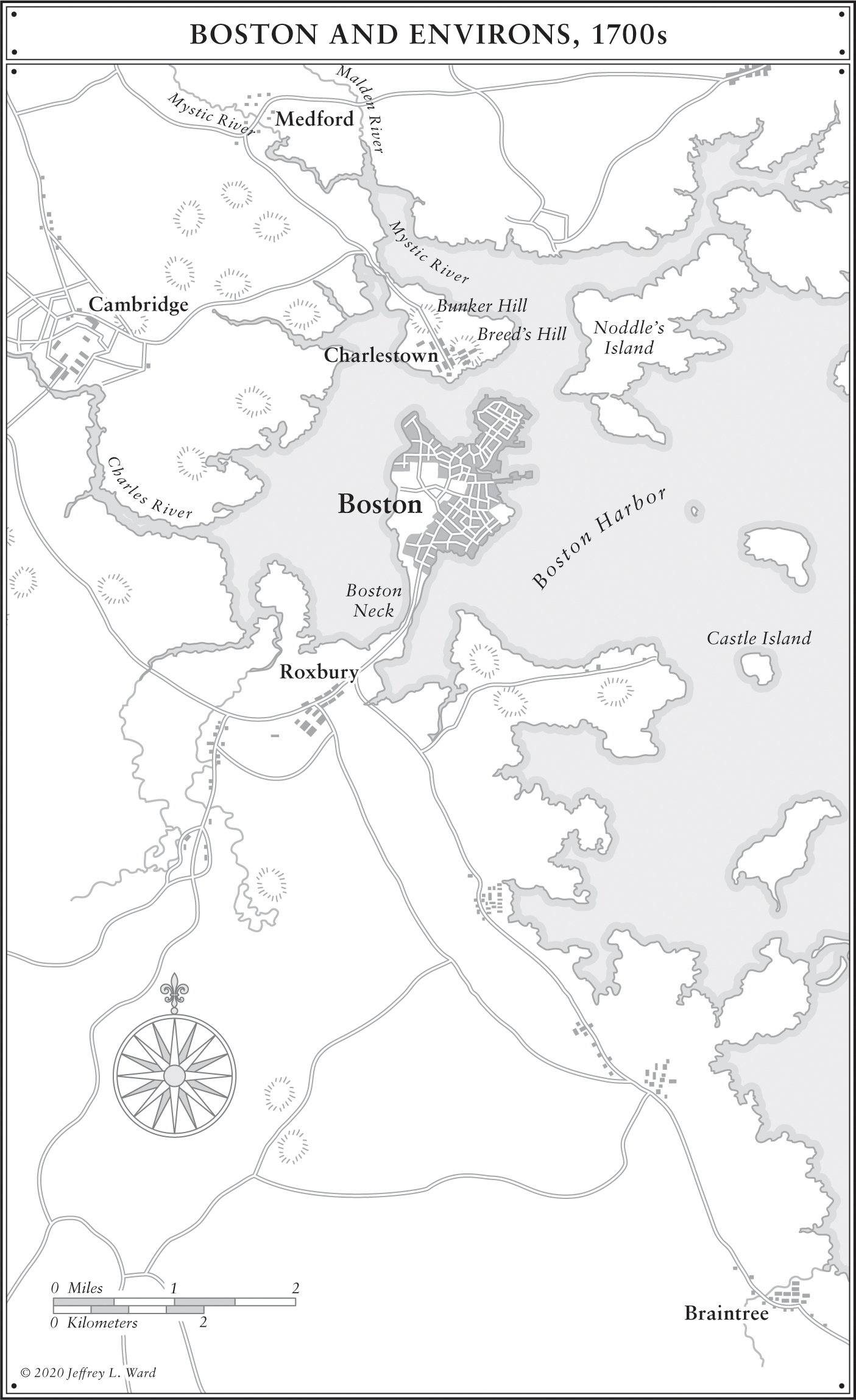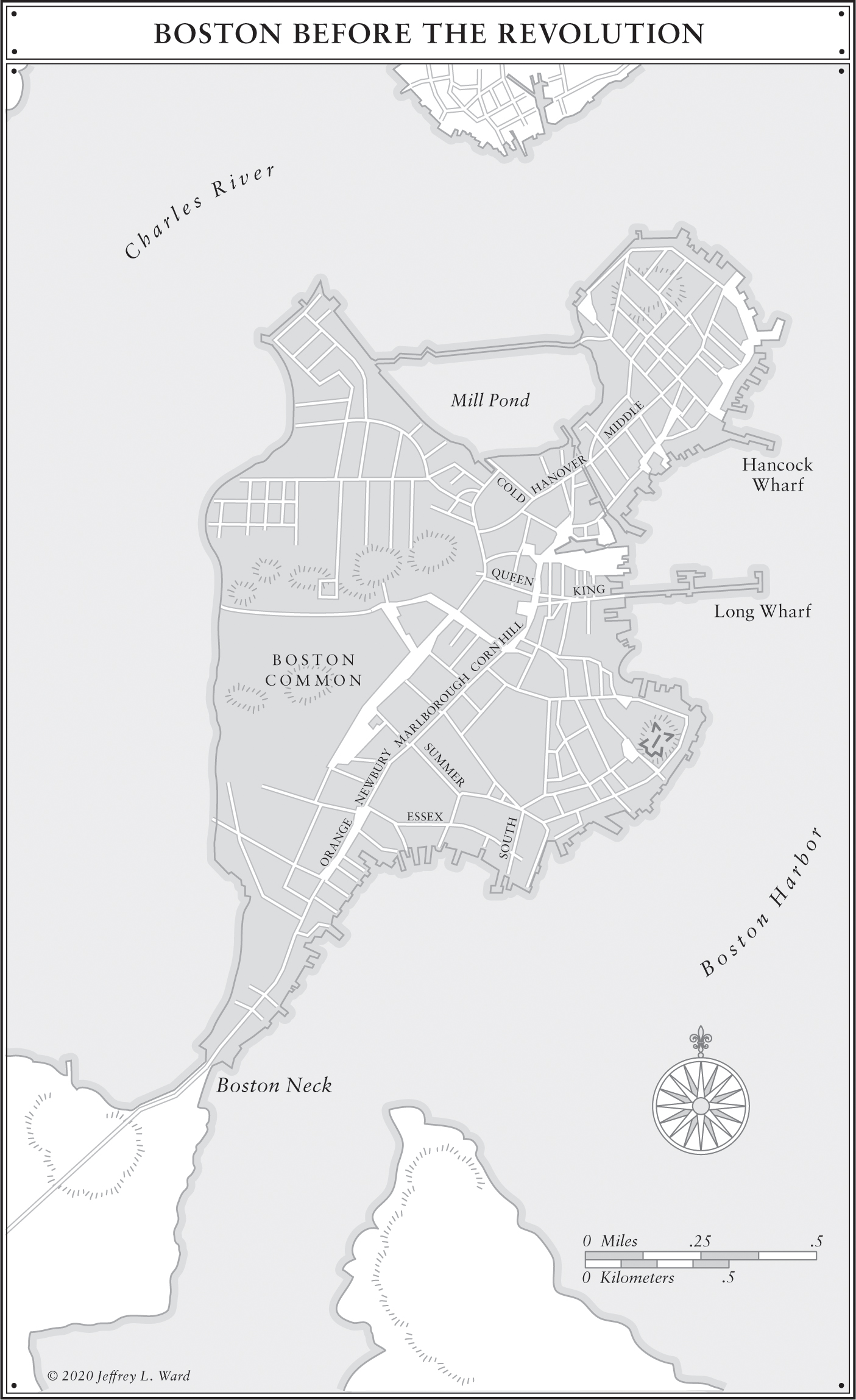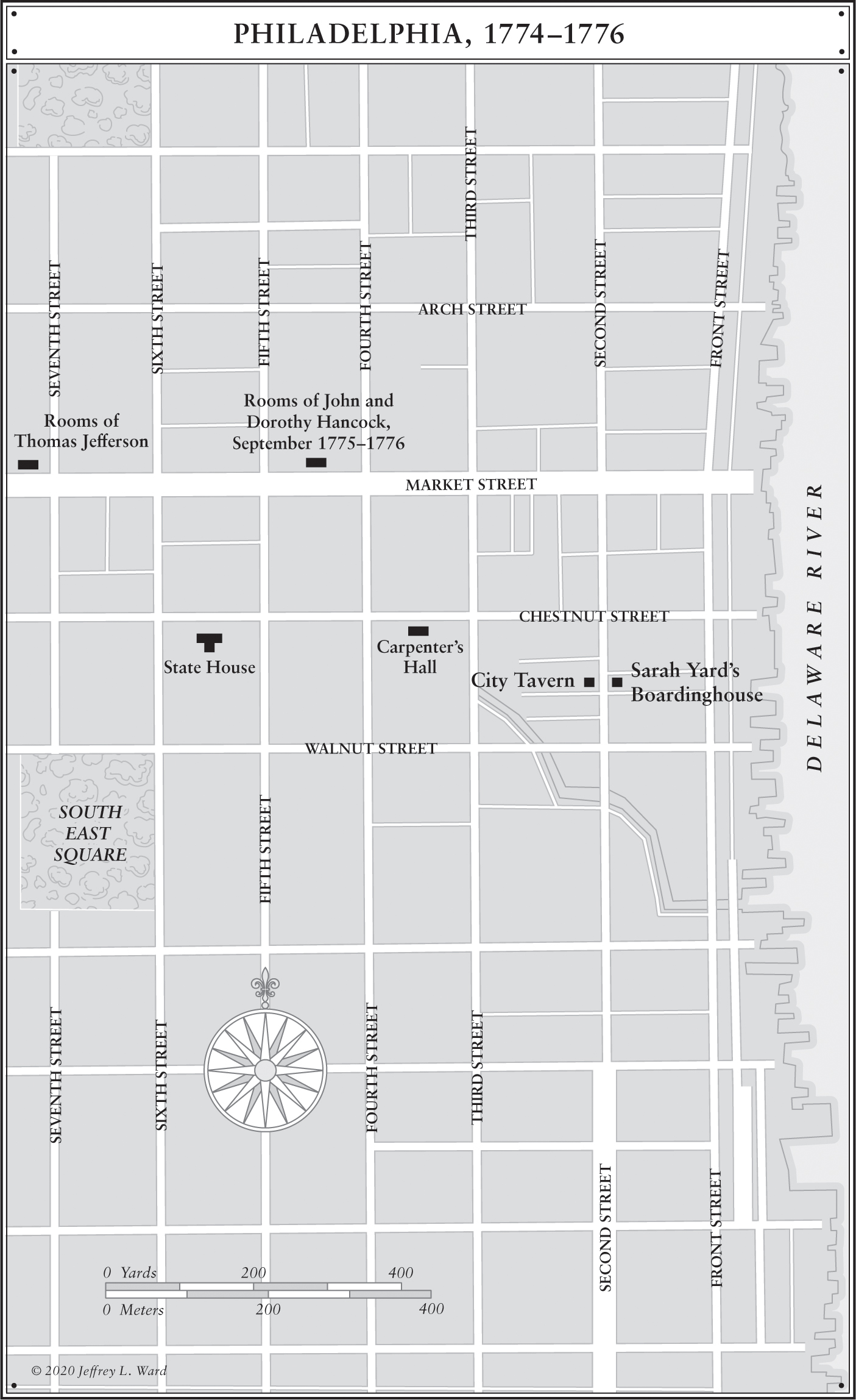The author and publisher have provided this ebook to you for your personal use only. You may not make this ebook publicly available in any way. Copyright infringement is against the law. If you believe the copy of this ebook you are reading infringes on the authors copyright, please notify the publisher at:
The Quincy Family
Edmund Quincy II (16281698) had thirteen children, including Daniel Quincy and Edmund Quincy III:
Daniel Quincy (16511690) + Anne Shepherd (16331708) = Colonel John Quincy
Colonel John Quincy (16891767) + Elizabeth Norton Quincy (16961769) = they had three children, including Norton and Elizabeth
Norton Quincy (17161801) never married
Elizabeth Quincy (17211775) + Rev. William Smith (17061783) = Elizabeth, Mary, Abigail, William
Mary Smith (17411811) + Richard Cranch (17261811) = Elizabeth, William, Joseph, Lucy
Abigail Smith (17441818) + John Adams (see below) = Abigail (Nabby), John Quincy, Susanna (Suky), Charles, Thomas
Edmund Quincy III (16811737) + Dorothy Flynt Quincy (16781737) = they had four children, including Edmund Quincy IV and Josiah Quincy
Edmund Quincy IV (17041769) + Elizabeth Wendell Quincy (17061746) = Edmund Quincy V, Henry, Abraham, Elizabeth, Katy, Esther, Sarah, Dorothy (Dolly)
Sarah Quincy (17361790) + William Greenleaf (17381793) = John Hancock Greenleaf
Elizabeth Quincy (17291770) + Rev. Samuel Sewall (17151771)
Esther Quincy (17381810) + Jonathan Sewall (17291796) = Jonathan, Stephen
Dolly Quincy (17471830) + John Hancock (see below) = Lydia, John George Washington
Josiah Quincy (17101784) married three times:
+ Hannah Sturgis Quincy (17121755) = Edmund, Samuel, Hannah, Josiah Quincy Jr.
+ Elizabeth Waldron Quincy (17221759) = Elizabeth
+ Anne Marsh (17231805) = Nancy, Frances
Edmund (Ned) Quincy (17331768) + Rebecca Lloyd: marriage planned, but Ned died
Samuel Quincy (17351789) + Hannah Hill (17341782) = Hannah, Sam Jr., Thomas
Hannah Quincy (17361826) + Bela Lincoln (17341773) = no children
Josiah Quincy Jr. (17441775) + Abigail Phillips (17451798) = Josiah III, Abigail
The Hancock Family
Bishop John Hancock (of Lexington, 16711752) + Elizabeth Clark (16741760) = they had seven children, including the Reverend John Hancock and Thomas Hancock
The Reverend John Hancock (17021744) + Mary Hawke (17111783) = John, Mary, Ebenezer
Thomas Hancock (17031764) + Lydia Henchman (17141776) = adopted John Hancock following death of his father, Reverend Hancock, in 1744
John Hancock (17371793) + Dolly Quincy (see above) = Lydia, John George Washington
The Adams Family
Joseph Adams (16541736) + Hannah Bass (16671705) = they had nine children, including John
Deacon John Adams (16911761) + Susanna Boylston (17081797) = they had four children, including John
John Adams (17351826) + Abigail Smith (see above) = Abigail (Nabby), John Quincy, Susanna (Suky), Charles, Thomas
The most important part of everything is the beginning.
JOSIAH QUINCY JR.
Every moment of our existence has some connection
to an eternal succession of future ages.
EDMUND QUINCY IV
In the spring of 1744, a congregation in the small village of Braintree, south of Boston in the Massachusetts Bay Colony, gathered to mourn the death of their minister, the Reverend John Hancock. Outside the church, the heavens opened up. Rain streamed down, drenching the wild bluebells that grew in the high meadows of Penns Hill overlooking the sea, dripping from the apple trees planted in ordered lines behind the villages low houses, and running in widening rivulets between freshly plowed spring fields. Inside the church, its stone walls were streaked with black lines of damp and the windows steamed in the warmth rising off the gathered mourners.
Six years earlier, in 1738, Reverend Hancock gave the funeral sermon for Braintree villager Edmund Quincy III, who had died the year before while visiting England. There was no body to bury but much to mourn. In his sermon, Hancock lamented the many afflictions of the Quincy family, having endured a year of many family deaths, including the death of Edmunds wife, Dorothy Flynt Quincy. But not only had the family suffered from their losses, Reverend Hancock preached: the community as a whole had been wounded, for the strength of the whole derived from the contributions of each individual inhabitant.
What Reverend Hancock could not have known in 1738and what no one in the church knew on the day of his funeral in 1744was that from this village, Braintree, and this parish, the North Parish, would come the men and women who would shape the history of America. From the Quincy family, whose losses were so heavy in 1738; from the Adams family, whose patriarch served as deacon to the North Parish Church; and from Reverend Hancocks own family would come the leaders of the next generation, the rebels who would foment a revolution.
The rebels were still childrenor not yet even bornand their time to lead was still decades away. But their storythe shared story of John Hancock, Dolly Quincy, John Adams, Abigail Smith, and Josiah Quincy Jr.began on that day in May 1744, when a community gathered to mourn their spiritual leader.
Reverend Hancocks son John was seven years old when his father died. On the day of the funeral, he sat in the same pew he had sat in every Sunday listening to his father preach. Beside him sat his mother, Mary Hawke Hancock, his sister, Mary, and his brother, Ebenezer.
Braintree may this day be called Bochim, a place of Weepers, began the Reverend Ebenezer Gay. Gay was minister of the Old Ship Church in Hingham but had come to Braintree to preach the funeral sermon of his good friend, John Hancock. Reverend Gay looked out over the crowded church, every pew taken up and more people standing with their heads bowed. All the community had come together to mourn the too-short life of a very good man.
Reverend Hancock had loved his North Parish ministry, a small but solid community of Congregationalists settled by the bay. Hed been raised inland, in the town of Lexington, the oldest son of the man hed been named for, and in whose footsteps he had at first followed. His father was a minister so powerful that he was called the Bishop of Lexington, a minister so persuasive that a brand-new meetinghouse had been built for him when he commanded it, its spire visible from the countryside all around. And yet when the younger Reverend Hancock was ready to preach, he left Lexington and came to Braintree, eager for the sea and for a different style of preaching.




